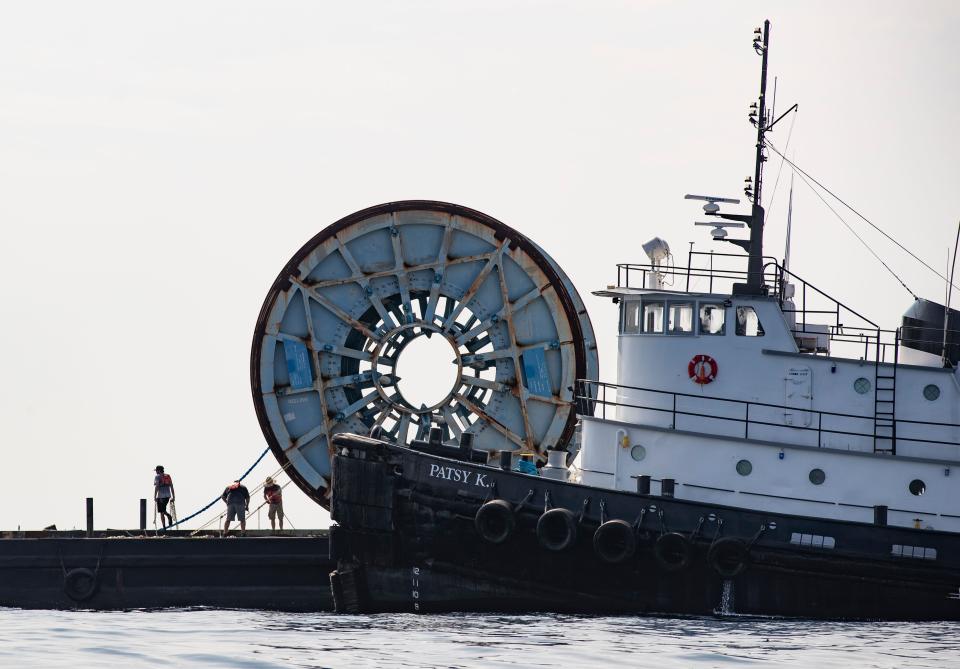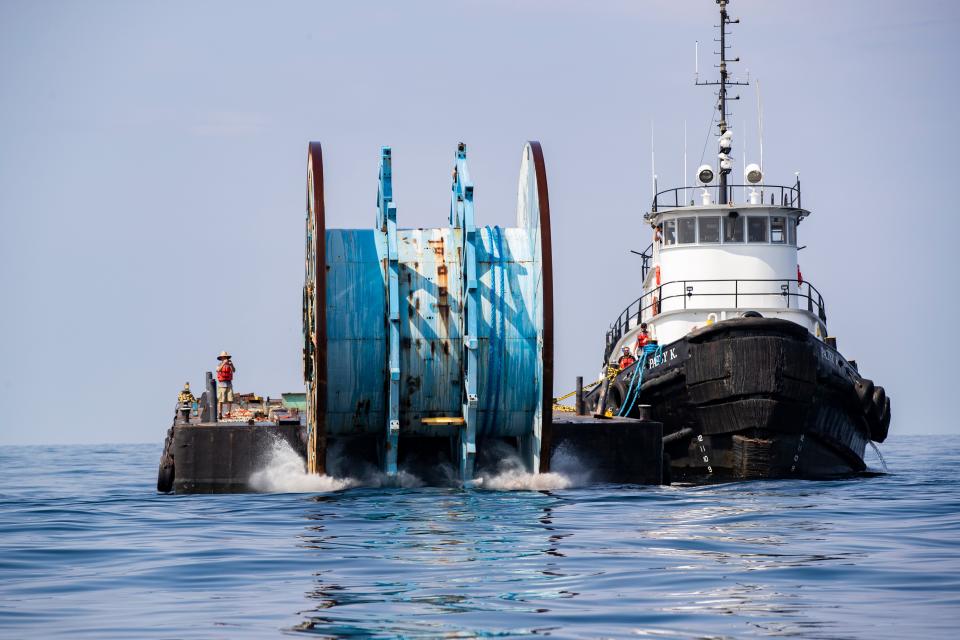Bay County's artificial reef program reviving coastal ecosystem, boosting economy
BAY COUNTY — The county is reeling in the benefits from one of its major projects.
Bay County's artificial reef program has made steady progress in helping protect wildlife and bringing back for divers and fishermen the natural ecosystem that was damaged by the BP oil spill in 2010 and Hurricane Michael in 2018.
Program officials have deployed several hundred reefs in the Gulf of Mexico since the early 2000s — including 268 modules across 20 sites from October to December 2020, and five reels across three sites in September 2021 — to attract native fish such as red snapper, grouper and scamp.
1.5 million pounds gone!: Bay County hits milestone in removal of derelict vessels
5 artificial reefs placed: Grab your diving gear and fishing rod! Bay County finishes latest project
The BP oil spill brought "months of closure and impact both economically and just from a quality of life standpoint ... and as far as Hurricane Michael, we had a lot of our ships and reefs that we have, that were mainly used for diving, those were impacted," said Scott Jackson, County Extension director and Seagrant extension agent. "And so, slowly over time, we're trying to rebuild those reefs so that we can continue to be known for a place where tourists can come here and also, for people that live here can get out and enjoy fishing and diving."

Waiting for permits in 2022
After placing five artificial reefs in St. Andrew Bay in September 2021, county officials have been working to secure permits through the RESTORE Act to place more reefs.
"The RESTORE Act is made up of about 1,000 tons of secondary use concrete materials and also some towers that were donated from Gulf Power a long time ago. And so, we've just received (on Tuesday) a new permit to help us with that project," Jackson said. "It's a one-mile by one-mile section permit. It's about 5 nautical miles to the west of St. Andrews Pass. And inside of that area, we're going to be looking at seven to 10 sites."
Jackson said officials also have to apply for a permit from the Army Corps of Engineers.
The new reefs aim to restore prize game fish populations and benefit the diving and fishing industries.
"These would probably be more for fishing, where (the reels placed in September) and that kind of stuff would be kind of for both," Jackson said. "So, some of the reefs that we put down in December of 2020, completing that project just a little over a year and a half ago, will be available and ready for use this year with snapper season coming up."
Florida's 2022 recreational red snapper season will open June 17 and run through July 31, as well as 12 days in the fall.
What are artificial reefs?
When it comes to creating the reefs, there are different types of materials that can be used — concrete and secondary-use materials.
"One example would be the types of reefs that we use for (Natural Resources Damage Assessment), which are specifically made for the use of artificial reefs," Jackson said. "And then there's secondary use materials that you might be familiar with, like those reels that we put out. They weren't made to be reefs, but we utilize them because they make good reefs."

The artificial reef program team includes multiple volunteers and partnerships, such as Oceaneering International, Bay County Commission, UF/IFS Florida Seagrant Extension Bay County, Florida Fish and Wildlife, Bay County Tourist Development Council, Port of Panama City and Mar-K Towing.
And studies show the reefs boost the local economy.
"Before the storm, we know that large amounts of our marine and coastal businesses benefited from the presence of artificial reefs in Bay County," Jackson said. "And a while back, the University of West Florida did a study that kind of pointed to Bay County being able to reap benefits. There was $49 million worth of personal income coming just to Bay County alone, on the artificial reef inventory that we have in our offshore waters in the Gulf of Mexico."
Diving into the future
Jackson said officials are excited about their upcoming projects, especially their RESTORE Act reefs. They hope to complete it this year.
"People can start to utilize those reefs going into 2023 and then (we can) look at some additional funds and work with the marine industry and community to decide how best to use those new funds that we have coming in from NRDA, which we should start to have those here and in January," Jackson said. "Those would be really nice opportunities to maximize and help the county continue to be a leader in artificial reefs in Northwest Florida."
Their staff also is growing, with the Bay County Co-Op Extension Office receiving the go-ahead for the coastal resources coordinator position to be a full-time position, which will allow officials to complete permits faster, secure grants, and get grant funding for the removal of derelict vessels.
To see locations of the reefs and learn more, here is a list of 2021's artificial reef deployments and 2019's artificial reef deployments.
This article originally appeared on The News Herald: Bay County sees major progress with artificial reef program

